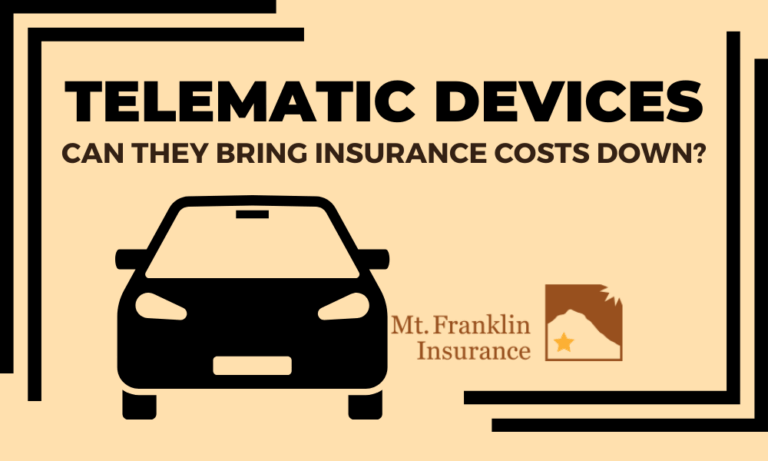
Telematic platforms, also known as Usage-Based Insurance (UBI) allow business owners to monitor their drivers, vehicles, and operations. Typically, “telematics” are a piece of technology involves installing a small plug-in device into the onboard diagnostics port (OBD) that every modern vehicle has. These small devices gather data about that vehicle and relay it to the owner on a centralized dashboard that can be monitored. Large businesses have been using this technology for decades, but as the price of technology comes down and insurance carriers see the value, the cost to put this technology in place can now be free to many businesses. In some cases, insurance carriers will even rebate costs to install the system as an immediate incentive to businesses.
The Business Power of Telematics
As technology continues to evolve, the data that telematics can provide business owners is ever increasing. Even without the insurance savings that many businesses are seeing, just the operational control they provide owners is amazing. The onboard device, which plugs into the vehicle, can gather real time data about the vehicle, its location, and as a result, vast amounts of data. Regardless of which vendor’s product a business uses, most modern systems at least provide:
1. Operational Efficiency
- Route optimization: Telematics systems use GPS to find the most efficient routes, reducing fuel use and delivery times.
- Reduced idle time: Track and reduce vehicle idling, which cuts down on fuel waste.
- Maintenance scheduling: Get real-time alerts on engine diagnostics, helping prevent costly breakdowns with proactive maintenance.
- Geofencing: Ensure vehicles are driven only within an allowed perimeter distance
2. Enhanced Driver Performance & Safety
- Driver behavior monitoring: Track speeding, harsh braking, and aggressive driving. Use data to coach safer habits.
- Accountability: Drivers are more likely to adhere to safety standards when they know their behavior is being monitored.
- Accident reduction: Safer driving practices can lead to fewer accidents and liability claims.
3. Better Customer Service
- Accurate ETAs: Provide real-time tracking and more accurate delivery times.
- Proof of service: Detailed trip logs and reports confirm deliveries or service times.
- Rapid response: Locate the nearest vehicle to a customer or emergency situation quickly.
4. Asset & Theft Protection
- Real-time tracking: Know where every vehicle is at all times.
- Geofencing: Set alerts if a vehicle leaves a designated area.
- Stolen vehicle recovery: Increases the chances of recovering stolen assets quickly.
5. Insurance Savings
Each day, new vendors of telematics are emerging, so any particular list of vendors will be incomplete. Geotab, Samsara, Verizon, Azuga, Fleet Complete, and more currently compete in this space. However, insurance carriers are now offering this type of technology directly to customers.
Insurance Savings and the Cost of Implementation
Although the technology has been available for decades, the cost of implementing such a system used to only allow large fleet businesses to invest. However, the involvement of the insurance industry has now driven down the cost to the point where a small one or two vehicle business can get the same benefits.
Insurance carriers are always looking for ways to segment their customers so that better businesses get better rates. Previously, carriers only had access to a given company’s historical data to extrapolate what the pricing should be. However, with telematic data, insurance carriers can truly differentiate pricing. In fact, just the presence of a telematics system in a business demonstrates to carriers a true commitment to safe driving and typically impacts a driver’s performance since they know they are being monitored. In addition, these systems are far less intrusive than camera systems since it is simply a small plug-in device.
With insurance carriers seeing the value of this technology, many are now providing a reduced insurance quote just for signing up. Your insurance agent should be showing you the savings option if you sign up for a telematics program. Typically, the carrier will then send you the devices to install and you will have a set period of time to install them in each vehicle. The devices come with a computer-based dashboard that owners can use.
Although each carrier varies, the typical data elements they review include:
1. Hard Braking / Rapid Acceleration
- These are typically the largest impact items. They show how aggressive a driver is, compared to average drivers in that area.
2. Time of Day Driven
- Driving during high-risk hours (e.g., midnight to 5 a.m.) increases risk exposure.
3. Trip Frequency & Distance
- More miles or trips = higher exposure to potential accidents.
4. Phone Use / Distraction
- Some telematics systems can detect phone handling or screen interaction while driving.
5. Speeding
- Average speeds being driven in a given area
Some customers are worried that carriers are “spying” on their exact location. While that type of data might be available, carriers just aren’t interested. They are using telematics to establish rates and distinguish safer from more hazardous drivers. That is what they care about and what they focus on.
Telematics provides a win-win
In addition to the incentive discounts to sign up for the program, long term use can improve a business’s driving habits which drives rates down. Coupled with the data that business owners can use to manage their own company, putting a usage-based insurance (UBI) program in place is beneficial. And, given many carriers will now provide the telematics systems for free, it really becomes advantageous to sign up at the earliest opportunity.
If your agent or broker isn’t discussing telematics with you, reach out to us at Mt. Franklin Insurance and we’ll review the options in the marketplace with you.




